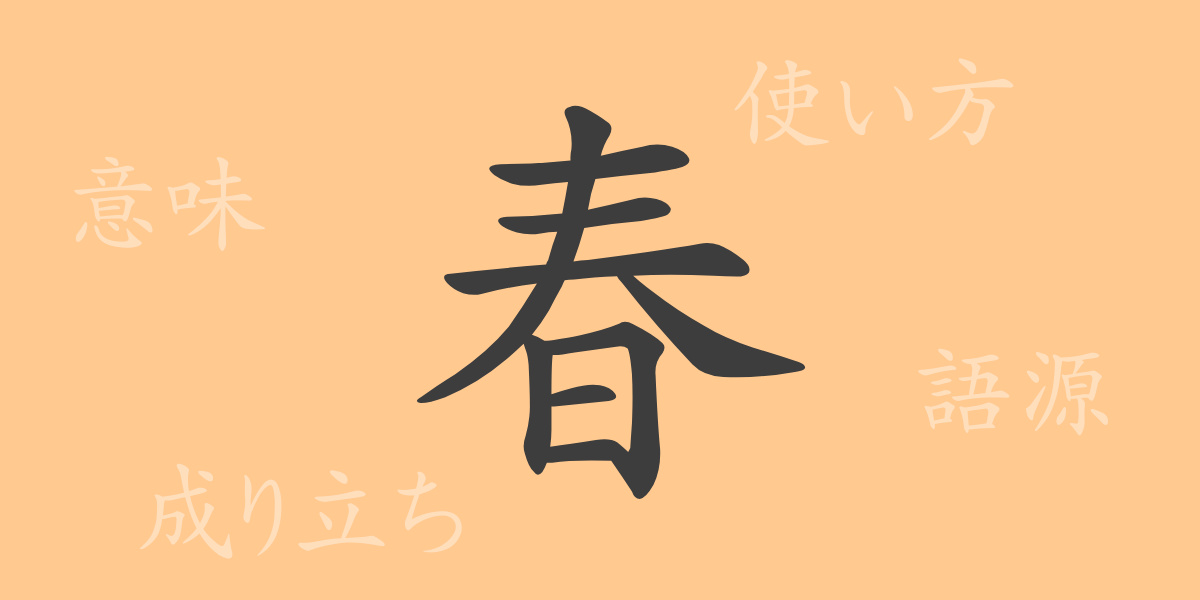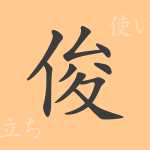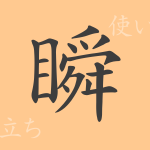In the season when cherry blossoms are in full bloom, the warm sunshine on a pleasant afternoon, and the moment when new life breathes again. All these are encapsulated in one kanji, “春(はる, haru)” which means spring. Spring symbolizes more than just a change of seasons; it is deeply rooted in Japanese culture and the lives of its people. In this article, we will delve into the kanji “春(はる, haru)” from its origins to its meaning, usage, and even idioms and phrases related to spring.
春の成り立ち(語源)
The kanji “春(はる, haru)” originated in ancient China and was regarded as an important season in agricultural culture. The etymology is believed to come from “生(せい, sei)” which means “to arise” or “to be born.” Additionally, “春(はる, haru)” is related to “早(そう, sou),” which means “early,” signifying the beginning of the year.
春の意味と用法
Spring is one of the four seasons, signaling the start of the new year. It represents a time of rebirth and growth in nature, symbolizing hope and new beginnings in many cultural and artistic works. Common usages include “春分(しゅんぶん, shunbun)” meaning the vernal equinox, “春雨(はるさめ, harusame)” meaning spring rain, and “春夏秋冬(しゅんかしゅうとう, shunkashūtō)” representing the four seasons.
春の読み方・画数・部首
The kanji for spring is admired for its beauty and meaning by many people.
- 読み方: 音読みでは「シュン(しゅん, shun)」、訓読みでは「はる(はる, haru)」と読みます。
- 画数: 春は総画数9画で構成されています。
- 部首: 春の部首は「日(にち, nichi)」で、これは「日(にち, nichi)」に関連する漢字を分類する際の基準となります。
春を使った熟語・慣用句・ことわざとその意味
Idioms and phrases related to spring are particularly colorful in the Japanese language. Here are some examples:
- 春夢(しゅんむ, shunmu): A short-lived dream, symbolizing something fleeting.
- 春秋に富む(しゅんじゅうにとむ, shunjū ni tomu): To be long-lived.
- 一年の計は春にあり(いちねんのけいははるにあり, ichinen no kei wa haru ni ari): A saying that suggests making plans for the year should be done in spring.
春についてのまとめ
Spring goes beyond just being a name of a season; it moves people’s hearts and has deeply influenced culture and language. Its beauty and richness are still alive in our daily lives through idioms and phrases. As a symbol of new beginnings, spring will continue to be loved by many people.

























